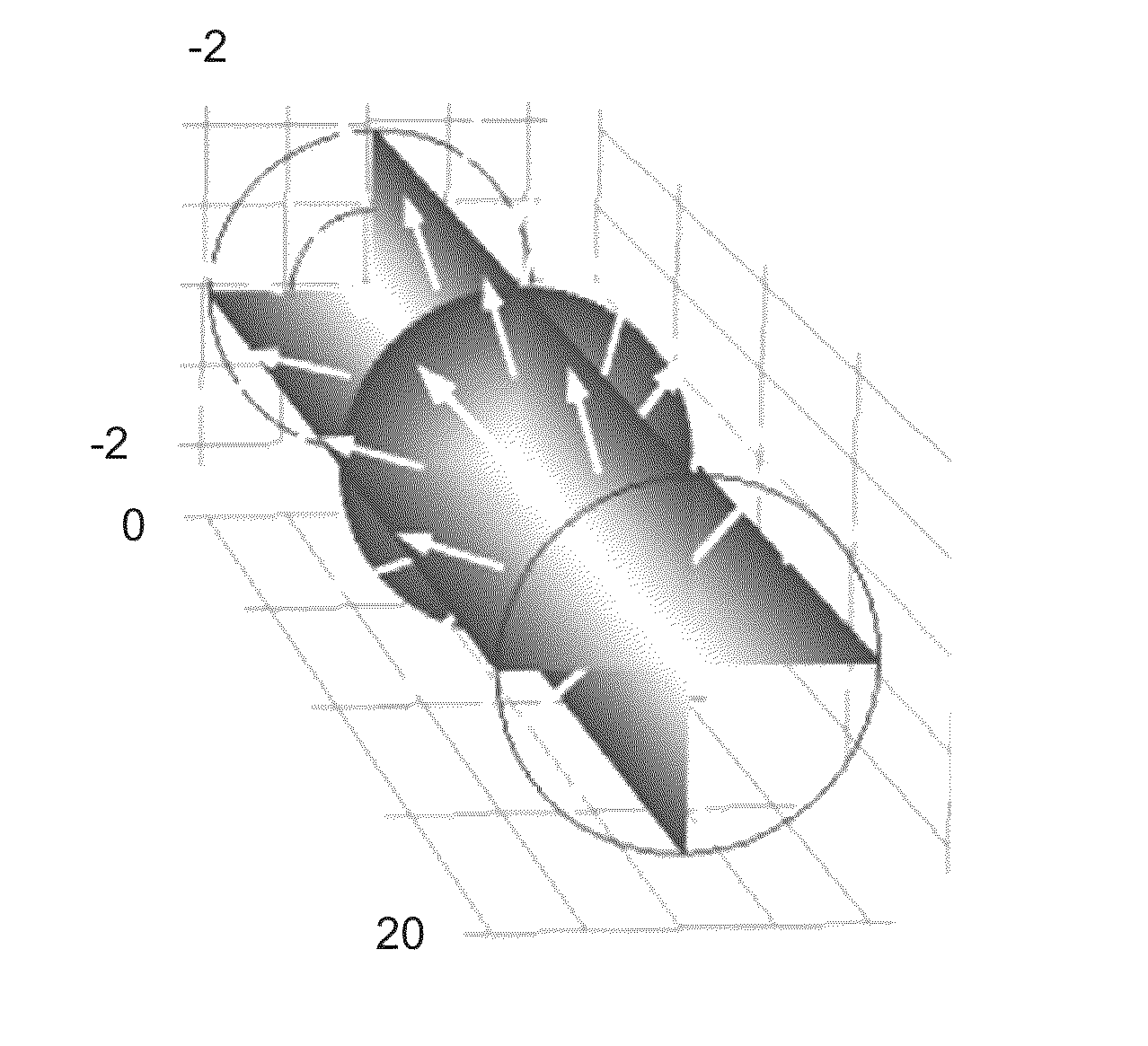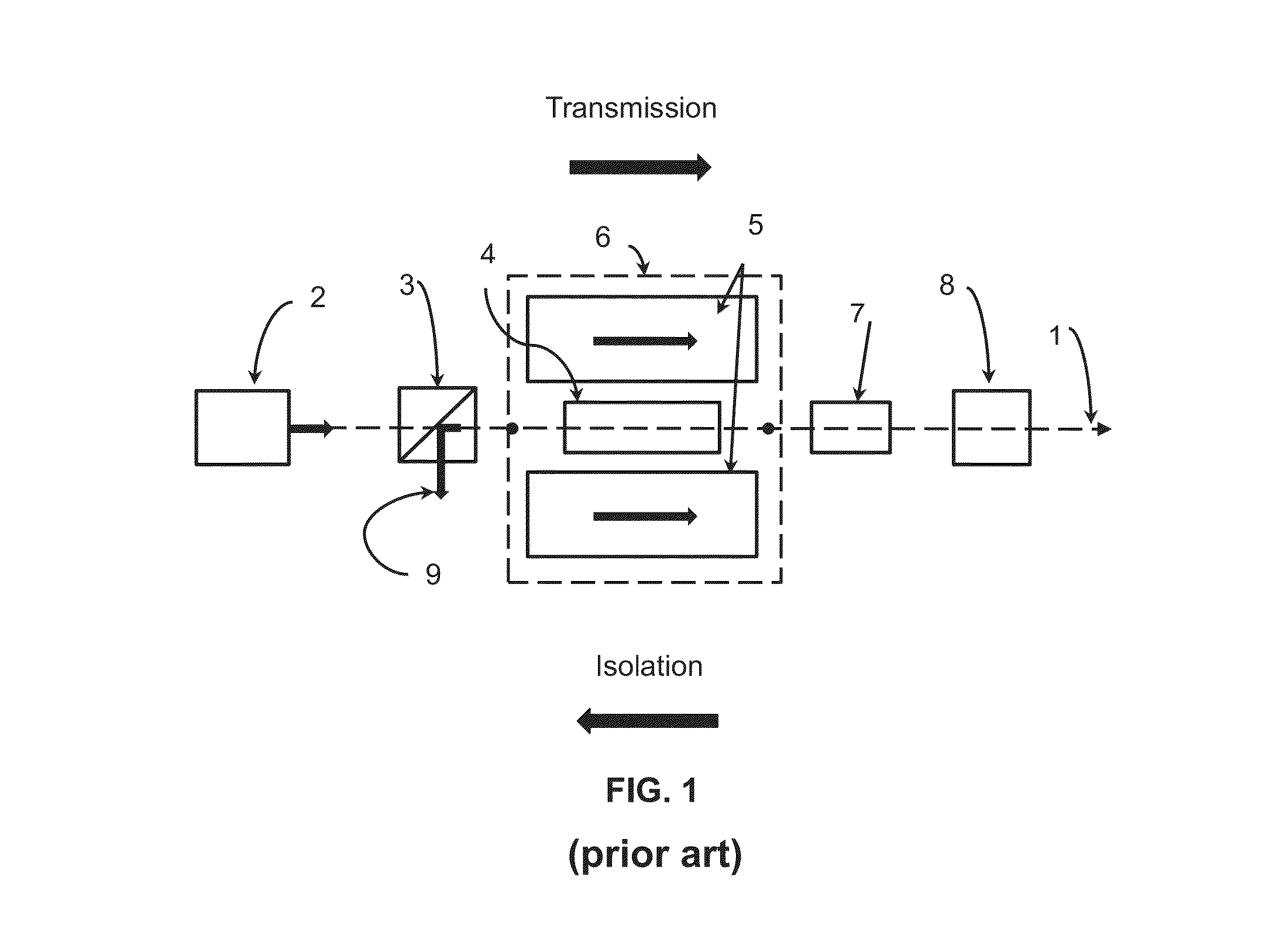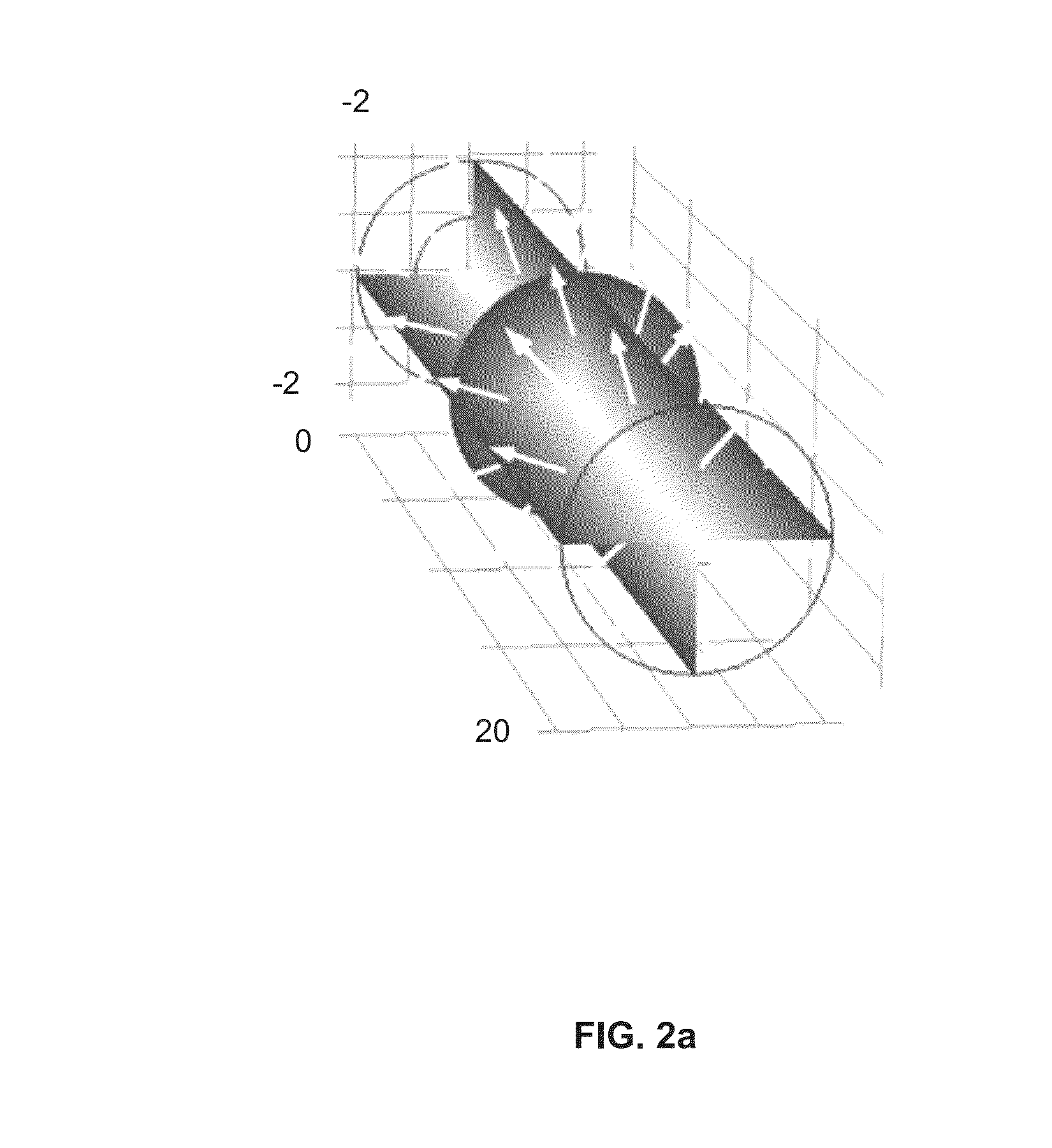The relative low brightness of these lasers has made them essentially insensitive to all but the most reflective targets.
As direct
diode arrays continue their progression towards
diffraction limited performance they too have demonstrated the expected increased sensitivity to reflections from practical targets.
Finally,
waveguide CO2 lasers are revitalizing CO2
laser applications with near
diffraction limited performance and new applications (e.g. EUV generation).
Radiation feedback from reflections is well known to cause power instabilities in single and low order mode lasers or even lead to catastrophic optical damage.
However the magnetic fields of this device were not uniform and the desired high optical isolation could only be achieved with very small beams.
To date, optical isolators suitable for use with
high power lasers have suffered from thermal effects within the
isolator optical elements.
However, this thermal profile is also responsible for two more serious and detrimental thermal effects in a high power Faraday rotator:
thermal lensing and thermal
birefringence.
For this reason, past attempts to reduce the thermal lens
focal length have used large beams in very large and expensive Faraday rotators.
The other detrimental
thermal effect occurring in high power Faraday rotators noted previously is thermal birefringence.
However, a compact, robust, inexpensive means for accurately sensing thermal lens
focal length shifts to feedback into an active thermal lens compensation
system is a difficult design task.
Additionally, the need for sub-Hz response times for rapid power changes while simultaneously precisely maintaining the original beam path is presently challenging, bulky and costly—although future innovation may address these issues.
In any event, active thermal lens
focal shift compensation does not address thermal birefringence effects in a Faraday rotator.
As a consequence,
thermal lensing would not be expected from all-
fiber isolators if the Faraday
fiber and polarizing
fiber which are fusion spliced together in such devices can be made to
handle high power.
These research efforts however have been plagued by very large, heavy and expensive
magnet structures that do not seem suitable for widespread commercial use.
The effects of thermal birefringence in all-fiber optical isolators are difficult to assess presently, and represent an additional uncertainty regarding the future potential for high power operation of all-fiber isolators.
Although this passive means of thermal birefringence compensation is elegant, this method has three drawbacks for practical devices:It adds extra optical components and overall complexity;Although it can compensate for thermal birefringence in the isolation direction, the effects of thermal birefringence can be compounded in the forward direction; andIt does not improve thermal lens focal shifts in any way.
For the above reasons, this passive means of thermal birefringence compensation has not been used in high volume commercially available optical isolators for use with
high power lasers.
However this approach has been found to have some major drawbacks.
Finally, most negative dn / dT materials studied to date have undesirable material properties such as
low resistance to
thermal shock and / or sensitivity to humid environments.
Although elegant in theory, in practice compensating for undesirable thermal gradients is difficult to achieve at high power.
However, the
Verdet constant and thermo-optic improvements that these materials offer relative to TGG are incremental only.
Such a reduction in Faraday rotator thermal lens
focal shift is insufficient however to make low thermal lens
focal shift, kW class optical isolators of simple construction similar to presently available lower power TGG optical isolators.
Further, new Faraday rotator materials such as TAG in crystalline or transparent
ceramic form are difficult and expensive to bring to the market.
Although the potential for a tremendous advance in high power Faraday rotator optical material still exists, no currently known material has sufficiently improved properties to reduce thermal lens focal shifts and thermal birefringence to a level required by optical isolators to meet high power
laser marketplace demands today.
Although useful for esoteric research applications, these approaches, and any permanent
magnet approach in general, become extremely bulky and expensive relative to existing commercially available isolators when attempting to generate average uniform ˜2 T magnetic fields over Faraday optic lengths of ≧11 mm.
Although reduced in magnitude, a cylindrical thermal lens is formed which can be more difficult to focus properly in an optical
system.
Additionally, either expensive
cylindrical lens systems or complicated off axis spherical mirror systems are required to transform conventional circular beams to a highly elliptical beam and vice versa as desired by conventional laser users.
However, the factors noted above have kept slab geometries from being broadly employed with conventional circular beam high power laser sources.
Due to the cost and complexity of multiple optical elements and
helium gas systems specified however, such designs have not been employed beyond research lab environments to date and do not appear destined for practical industrial usage.
However, at this time no known Faraday material with such a desired
Verdet constant suitable for use with kW class lasers is commercially available.
 Login to View More
Login to View More  Login to View More
Login to View More 


